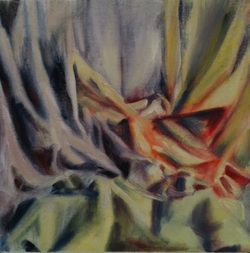
I am a neurologist. My experience as a neurologist informs my painting and vice versa. My medical training was based in the French tradition of semiology, which implies close observation of patients in search of clinical clues. My scientific training, on the other hand, fed my thirst of understanding and rigor. Both trainings encouraged my curiosity and creativity. However my neuroesthetics projects are primarily grounded in my experience as a painter, rather than being purely rethoric neurological considerations. For example, I experienced, as a painter, that my familiarity with the human body influences my degree of empathy with the subject matter, and thereby the way I look at it and paint it: it is clearly harder for me to get away from object identity and focus on plastic qualities when I paint a live model (human being) versus a still life or a landscape. My experience seeing patients likely reinforced this phenomenon. In order to explore whether this can be generalized and explained, I am using eye tracking techniques to study how the painter and the viewer look at live models versus still lives or landscapes.